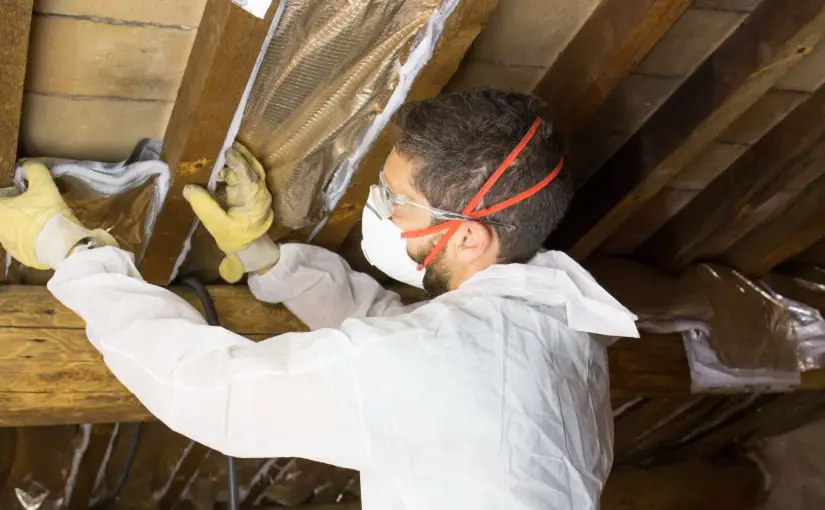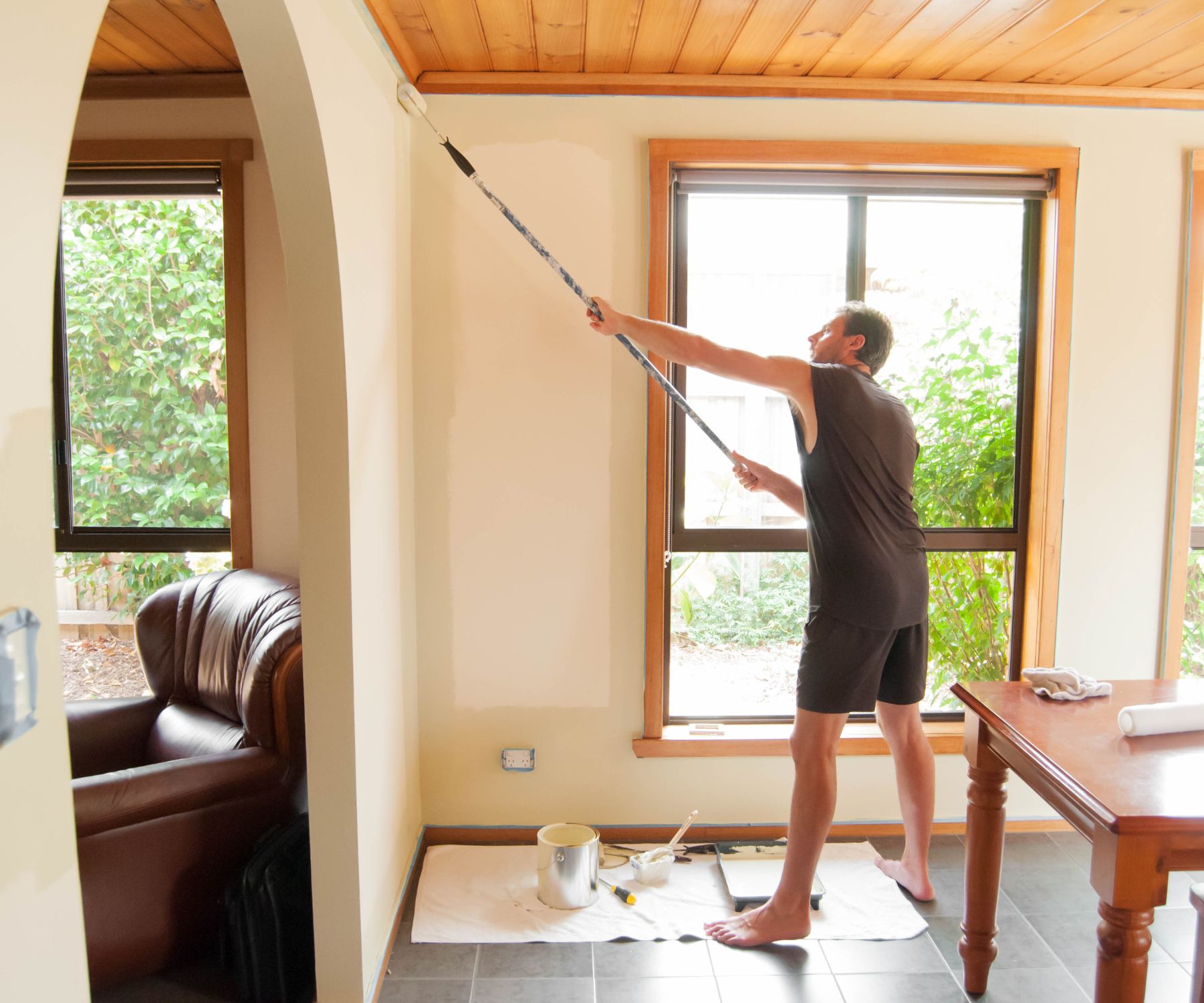Table of Contents
How to Remove Asbestos from Your Air?
Dealing with asbestos, especially on job sites, is heavily regulated due to its significant health risks. These regulations are in place to ensure that only trained professionals handle asbestos to prevent exposure.
For non-professionals or the general public, direct interaction with or attempts to remove asbestos is strongly discouraged due to the high risk of releasing asbestos fibers into the air, which can lead to serious health issues upon inhalation.
But clearly there are times when encountering asbestos may be unavoidable.
You may suspect or have confirmed the presence of asbestos but cannot immediately access professional remediation services.
This can occur in varied ways:
After Disturbance: Discovering that asbestos-containing materials have been accidentally disturbed, releasing fibers into the air.
During Renovations: During DIY home renovations or in workspaces where renovations uncover previously undisturbed asbestos.
In Rented Spaces: Tenants in older buildings might suspect asbestos but have landlords who are unresponsive or slow to take action.
In Workplaces: Employees might become aware of asbestos in their workplace but find that their employer is delaying professional assessment or remediation.
In Waiting Periods: When professional asbestos removal is scheduled but there’s a waiting period before the work begins.
In these scenarios, the primary concern is reducing immediate asbestos exposure until professional help can be secured.
Temporary Measures for Reducing Asbestos in the Air
HEPA Air Purifiers
While HEPA air purifiers cannot eliminate the source of asbestos, they can help reduce airborne asbestos fibers. Its importance to choose air purifiers with HEPA filters rated to capture particles as small as 0.3 microns. For asbestos, the denser the filter, the better. We recommend air purifiers that can use H13 and H14 filters.
Usage: Placing them near the disturbed area and run them continuously.
Selection:
| Room Size | Model | Filter Type | Key Features |
|---|---|---|---|
| Small Rooms (Under 300 sq ft) | Levoit Core 300S | H13 True HEPA | Compact design, Wi-Fi-enabled, high CADR rating for size |
| Medium Rooms (300-800 sq ft) | Coway Airmega 400 | True HEPA with Max2 system | Effective for larger spaces, smart features, real-time air quality monitoring |
| Large Rooms (Over 800 sq ft) | Alen BreatheSmart Classic | H13 HEPA (optional) | Customizable for specific concerns (allergies, asthma, etc.), quiet operation, customizable panels |
Seal Off Area
Seal off the area where asbestos disturbance occurred to prevent the spread of fibers to other parts of the building or home.
The Goal is to isolate the threat: Use plastic sheeting and tape to seal the area.
Ventilation
Avoid using HVAC systems that might circulate asbestos fibers throughout the space.
Personal Safety
Consider wearing personal protective equipment (PPE), such as P100 respirators and disposable coveralls, when near the affected area to minimize personal exposure.
 Preventing Home Contamination from Workplace Asbestos
Preventing Home Contamination from Workplace Asbestos
When asbestos is present at your job, it’s natural to worry about accidentally bringing it home, potentially exposing your family to its dangers.
Here are targeted strategies to prevent this:
- Dedicated Work Attire: Maintain a set of clothing exclusively for work, including footwear. Changing out of these clothes before leaving work can significantly reduce the risk of carrying asbestos fibers home.
- Secure Storage: Use on-site lockers or airtight bags to store your work attire after changing. This containment helps prevent any loose fibers from escaping.
- Home Entry Routine: Establish a routine at home where you immediately place any potentially contaminated items in a designated area for cleaning or disposal. This might include items like your work bag or personal protective gear that you can’t leave at work.
- Separate Laundry: Wash work clothes separately from the household laundry. Consider using disposable coveralls that can be discarded after use to eliminate the need for laundering potentially contaminated work clothes.
- Vehicle Care: If you must transport potentially contaminated items, place them in a sealed container or bag in the trunk. Regularly clean your vehicle’s interior, focusing on areas that might come into contact with work-related items.
- Communication with Household Members: Inform your family about the importance of these measures and why maintaining this separation is crucial for everyone’s health.
Identifying Potential Asbestos Hazards in Your Environment
While asbestos itself cannot be seen, smelled, or felt directly, certain indicators can signal its presence:
- Building Age: Buildings constructed or significantly renovated before the late 1970s are more likely to contain asbestos materials. If your workplace or home falls into this category, it’s wise to be cautious.
- Common Asbestos-Containing Materials: Familiarize yourself with the types of materials that commonly contained asbestos, such as popcorn ceilings, vinyl floor tiles, insulation around pipes, and certain types of shingles. Recognizing these materials can serve as a warning to take extra precautions.
- Material Condition: Pay attention to the condition of older building materials. If you notice wear, damage, or signs of disturbance in materials known to potentially contain asbestos, this could indicate a higher risk of fiber release.
- Review Historical Records: If possible, consult any available construction records, renovation logs, or material safety data sheets for your building. These documents can provide insights into the materials used and whether they might contain asbestos.
| Indicator | Detection Capability | Notes | Recommended Action |
|---|---|---|---|
| Sight | Limited | Asbestos fibers themselves are not visible. Look for aging or deterioration in building materials known to contain asbestos. | If suspect materials are damaged, avoid disturbing them and consult an asbestos professional. |
| Smell | No | Asbestos is odorless; its presence cannot be detected by smell. | Do not rely on the absence of odors as an indicator; professional testing is required for detection. |
| Feel | No | Asbestos fibers are microscopic and cannot be felt. Roughness in materials does not indicate asbestos. | Avoid handling suspect materials. Disturbance can release fibers into the air. |
| Historical Records | Yes | Building construction or renovation dates, materials used, and past asbestos assessments can indicate potential asbestos presence. | Review building records or consult with the building management for historical data on asbestos use. |
| Material Type | Yes | Certain materials used in construction before the 1980s are known to commonly contain asbestos, such as vinyl tiles, insulation, and textured paints. | Identify potential asbestos-containing materials based on their common use in construction and consult a professional for confirmation. |
| Professional Assessment | Yes | A certified asbestos professional can conduct a thorough inspection and take samples for laboratory analysis. | Engage a qualified asbestos inspector to perform a comprehensive assessment if asbestos is suspected. |
Key Takeaway: While direct detection of asbestos through sight, smell, or feel is not possible due to the microscopic nature of asbestos fibers, understanding the types of materials that may contain asbestos, along with historical building information, can guide you in identifying potential risks. Professional assessment remains the most reliable approach to confirm the presence of asbestos and determine the necessary safety measures.
Historical Use and Initial Discovery of Hazards:
- Ancient Use: Historical records indicate that asbestos was known and used by ancient civilizations, like the Greeks and Romans, for its fire-resistant properties. They used it in lamp wicks, clothing, and building materials. However, there are also early accounts suggesting that they noticed health problems among those who worked with the material.
- Industrial Revolution: The use of asbestos materials expanded significantly during the Industrial Revolution. It became a popular material for insulation, fireproofing, and other industrial applications due to its durability and resistance to heat and chemicals.
- Early Health Concerns: The first documented health concerns related to asbestos exposure date back to the late 19th and early 20th centuries. Factory inspectors and physicians began to notice a higher incidence of lung problems and early deaths among workers in asbestos mining and manufacturing industries.
- Medical Research and Studies: Throughout the 20th century, medical research increasingly linked asbestos exposure to various lung conditions, including asbestosis (a fibrotic lung disease caused by asbestos fibers) and later mesothelioma (a rare form of cancer almost exclusively associated with asbestos exposure). Studies observed workers in industries such as shipbuilding, construction, and textile manufacturing, where asbestos use was prevalent.
- Public Awareness and Regulation: By the mid to late 20th century, the evidence of asbestos-related health risks became more widely recognized, leading to public awareness campaigns, regulatory changes, and eventually bans or strict controls on asbestos use in many countries.
Post-Asbestos Detection Action Plan and Contacts
| Step | Description | Who to Contact |
|---|---|---|
| Confirm Asbestos Presence | If asbestos is suspected but not confirmed, arrange for professional testing to determine if asbestos fibers are present. | Certified Asbestos Inspector or Testing Service |
| Inform Stakeholders | Notify anyone who might be affected by the asbestos discovery, including family members, employees, or tenants. | N/A |
| Review Local Regulations | Understand your legal obligations and rights regarding asbestos management and removal in your area. | Local Health and Safety Authority or Environmental Agency |
| Professional Asbestos Abatement | Engage a licensed asbestos removal contractor to safely remove or encapsulate the asbestos. | Licensed Asbestos Abatement Contractors |
| Air Quality Testing | After asbestos removal, have the air quality tested to ensure all asbestos fibers have been effectively removed. | Environmental Testing Service |
| Document Actions | Keep detailed records of all actions taken, including communications, professional assessments, and remediation efforts. | N/A |
| Seek Legal Advice | If encountering resistance from landlords or employers regarding asbestos management, consider seeking legal counsel. | Attorney specializing in Environmental or Occupational Health Law |
| Report Non-Compliance | If applicable laws and regulations regarding asbestos management are not being followed, report the issue to the appropriate authorities. | Local or National Health and Safety Regulatory Bodies |
| Health Monitoring | If exposure occurred, consider medical monitoring for any potential health effects related to asbestos. | Healthcare Provider specializing in Occupational Health |
 FAQ: Asbestos Exposure and Safety Measures
FAQ: Asbestos Exposure and Safety Measures
Q: How can I tell if there’s asbestos in my home or workplace?
A: It’s challenging to identify asbestos by sight, as it’s often mixed with other materials. If your building was constructed or renovated before the late 1970s, it might contain asbestos. Look for signs of aging or damage in materials known to contain asbestos, such as insulation, vinyl tiles, and textured coatings. For a definitive answer, consult a certified asbestos inspector.
Q: What should I do if I accidentally disturb a material that might contain asbestos?
A: Stop work immediately to avoid further disturbance. Isolate the area by sealing it off with plastic sheeting and tape, and avoid using HVAC systems that could spread fibers. Consult a professional asbestos abatement service for assessment and remediation.
Q: Are HEPA air purifiers effective in removing asbestos fibers from the air?
A: HEPA air purifiers can reduce airborne asbestos fibers, but they don’t eliminate the source of asbestos. Use air purifiers with H13 or H14 HEPA filters for best results, and place them near the disturbed area, running them continuously.
Q: Can I remove asbestos materials myself if I wear protective gear?
A: It’s strongly discouraged to attempt DIY asbestos removal, even with protective gear. Improper handling can increase the risk of fiber release and exposure. Always seek professional asbestos abatement services for removal.
Q: How do I prevent bringing asbestos fibers home from a job site?
A: Use dedicated work attire andchange before leaving the job site. Store work clothes in airtight bags or containers, and wash them separately. Consider showering and changing clothes at the job site if possible.
Q: What are my rights if my landlord or employer is not taking asbestos seriously?
A: Regulations regarding asbestos management vary by location, but generally, landlords and employers have a duty to manage asbestos safely. If you’re facing resistance, seek advice from local health and safety authorities or legal counsel.
Q: How often should asbestos-containing areas be monitored or inspected?
A: Asbestos-containing materials in good condition and left undisturbed should be inspected periodically for signs of wear or damage. The frequency can depend on local regulations and the specific conditions of the materials.
Q: What happens after asbestos removal? Is the area safe immediately?
A: After asbestos removal, the area should be thoroughly cleaned by the abatement team, and air quality testing should be conducted to ensure all asbestos fibers have been removed. The area is considered safe once it passes clearance testing.
For more information, visit the EPA’s asbestos webpage.


 FAQ: Asbestos Exposure and Safety Measures
FAQ: Asbestos Exposure and Safety Measures